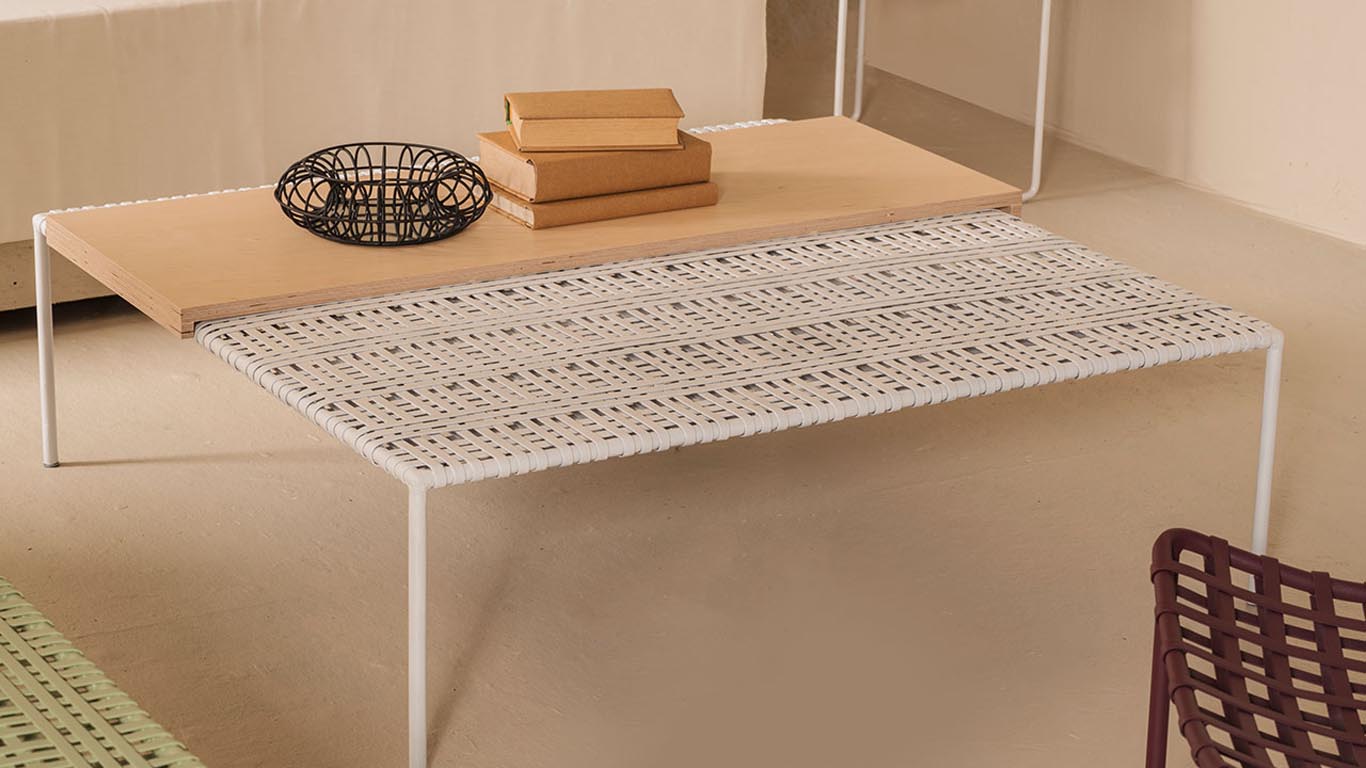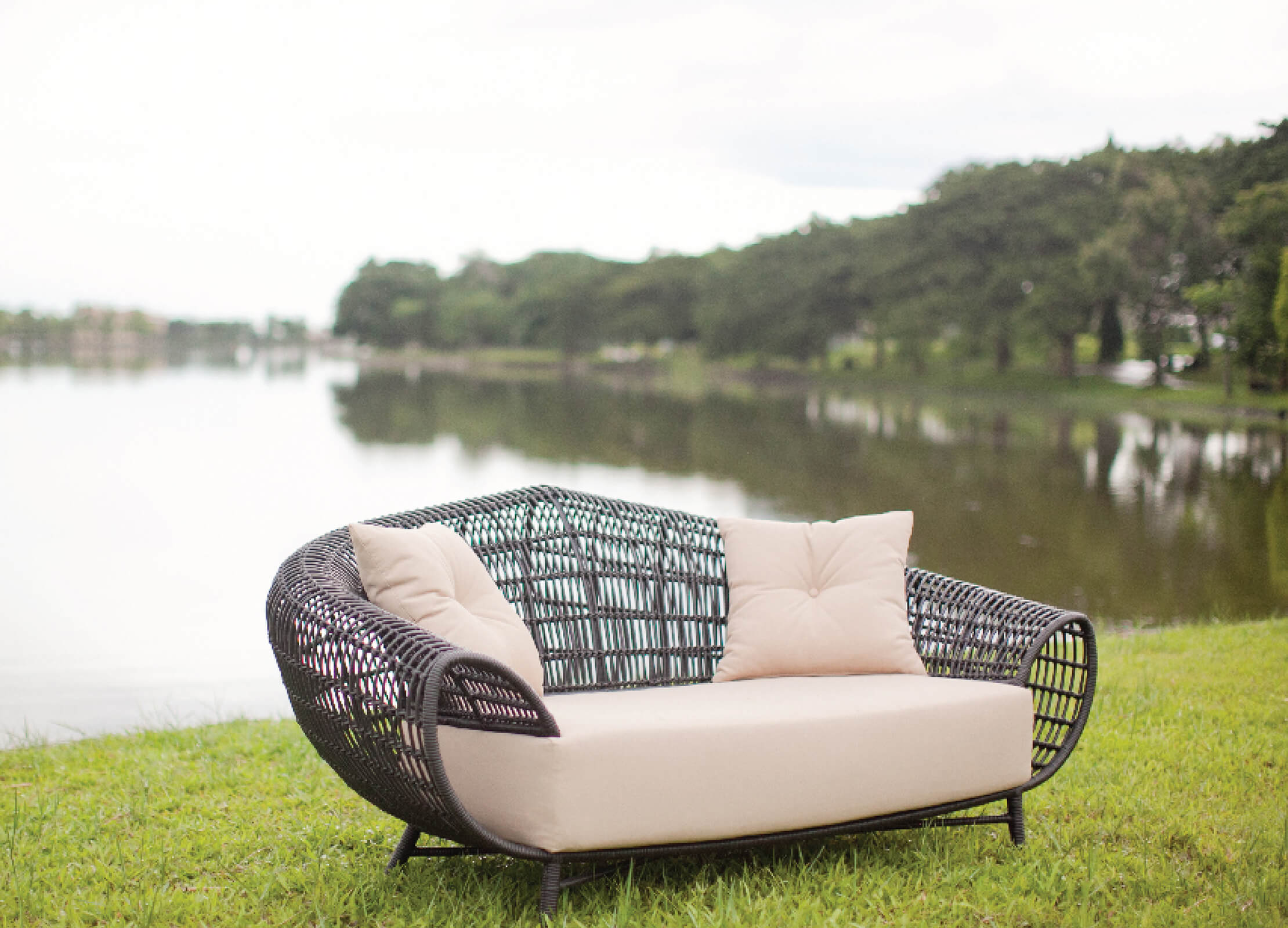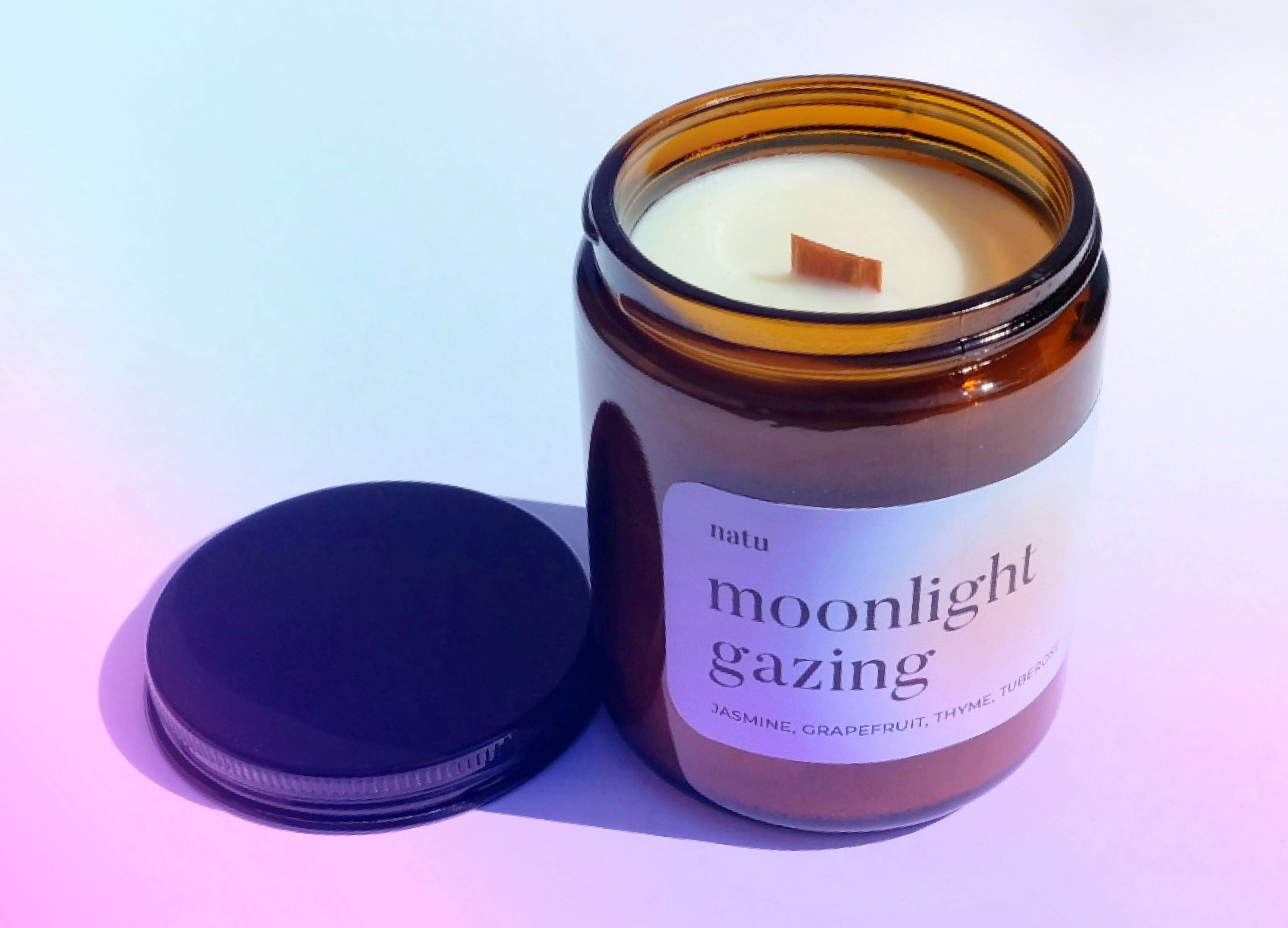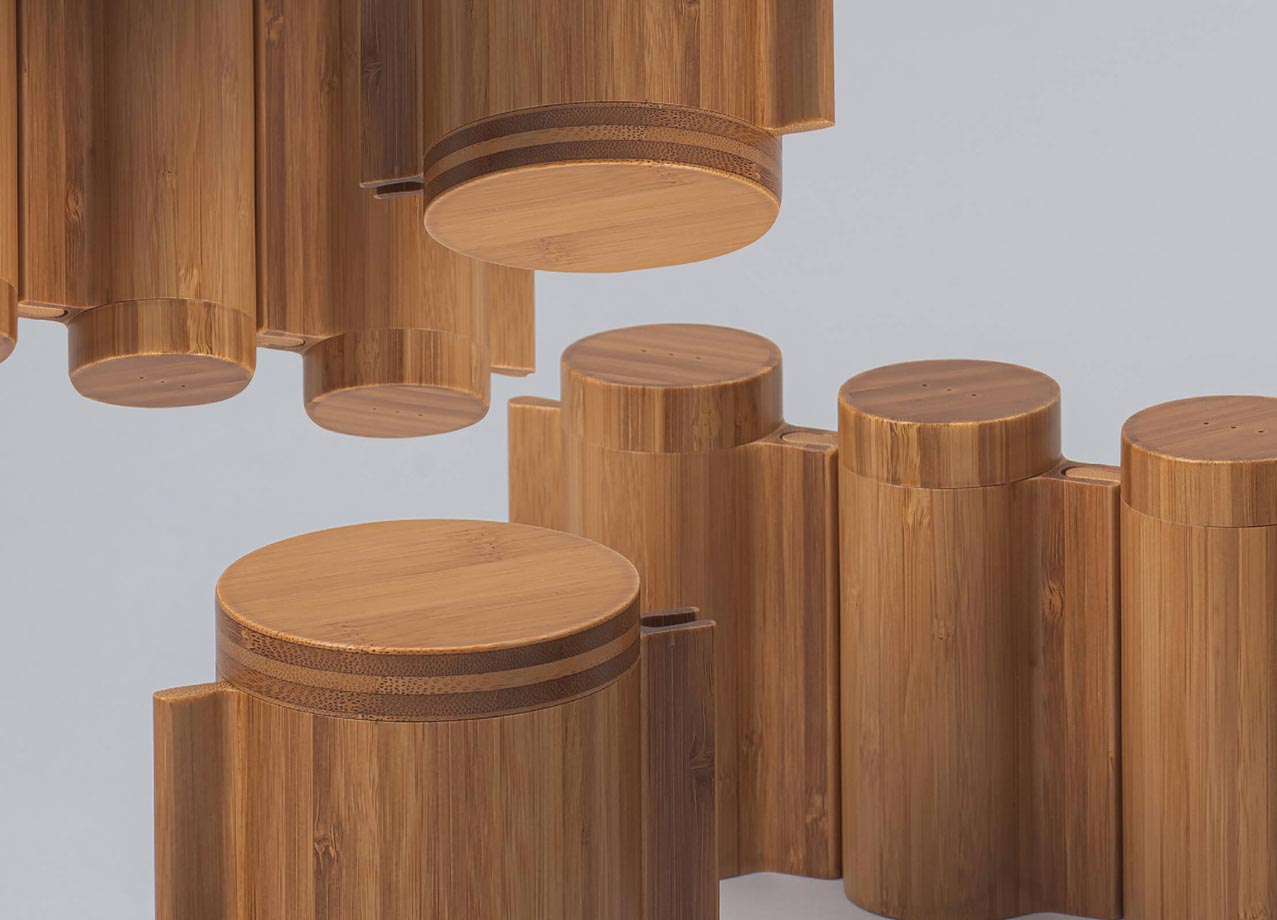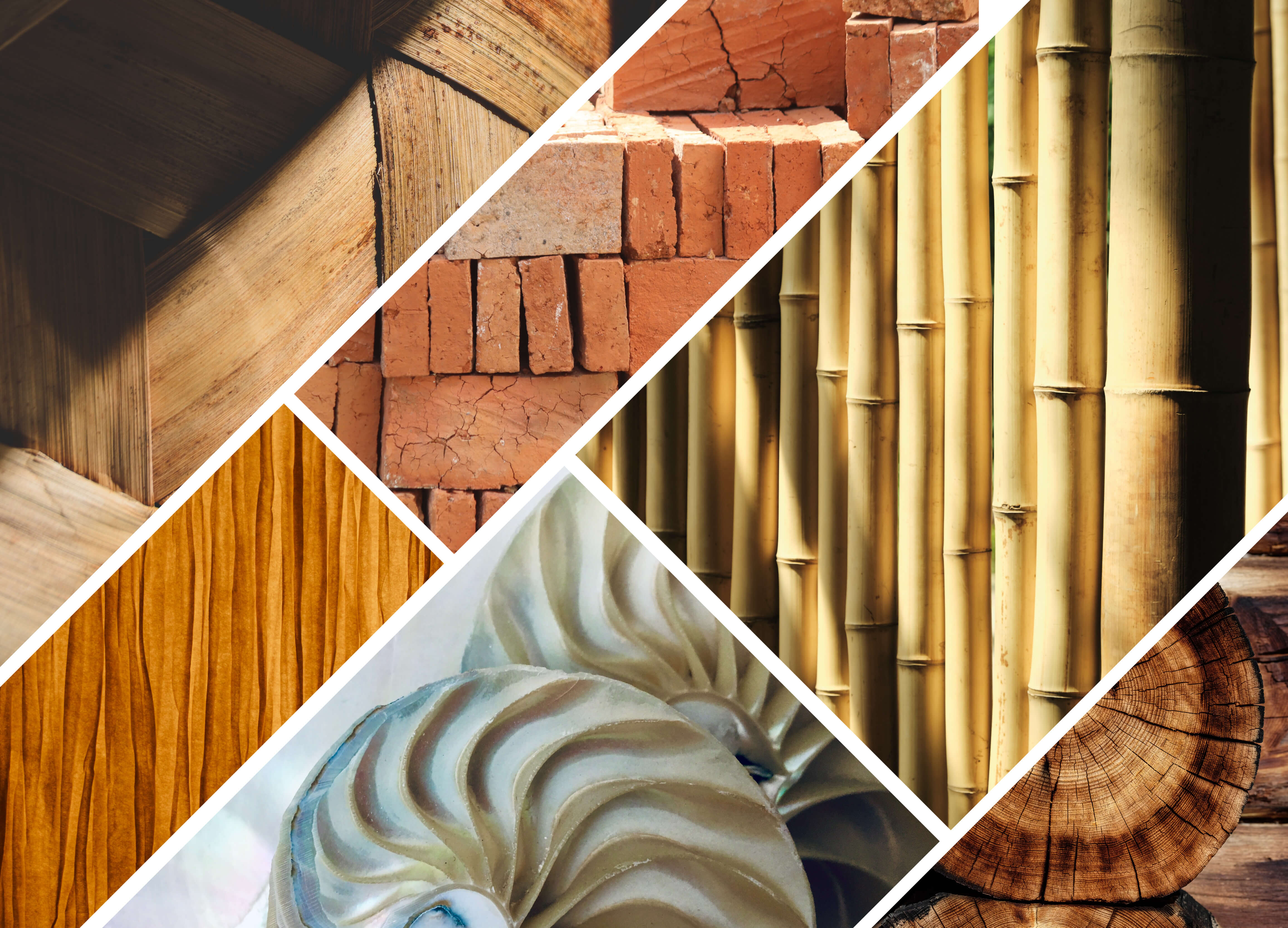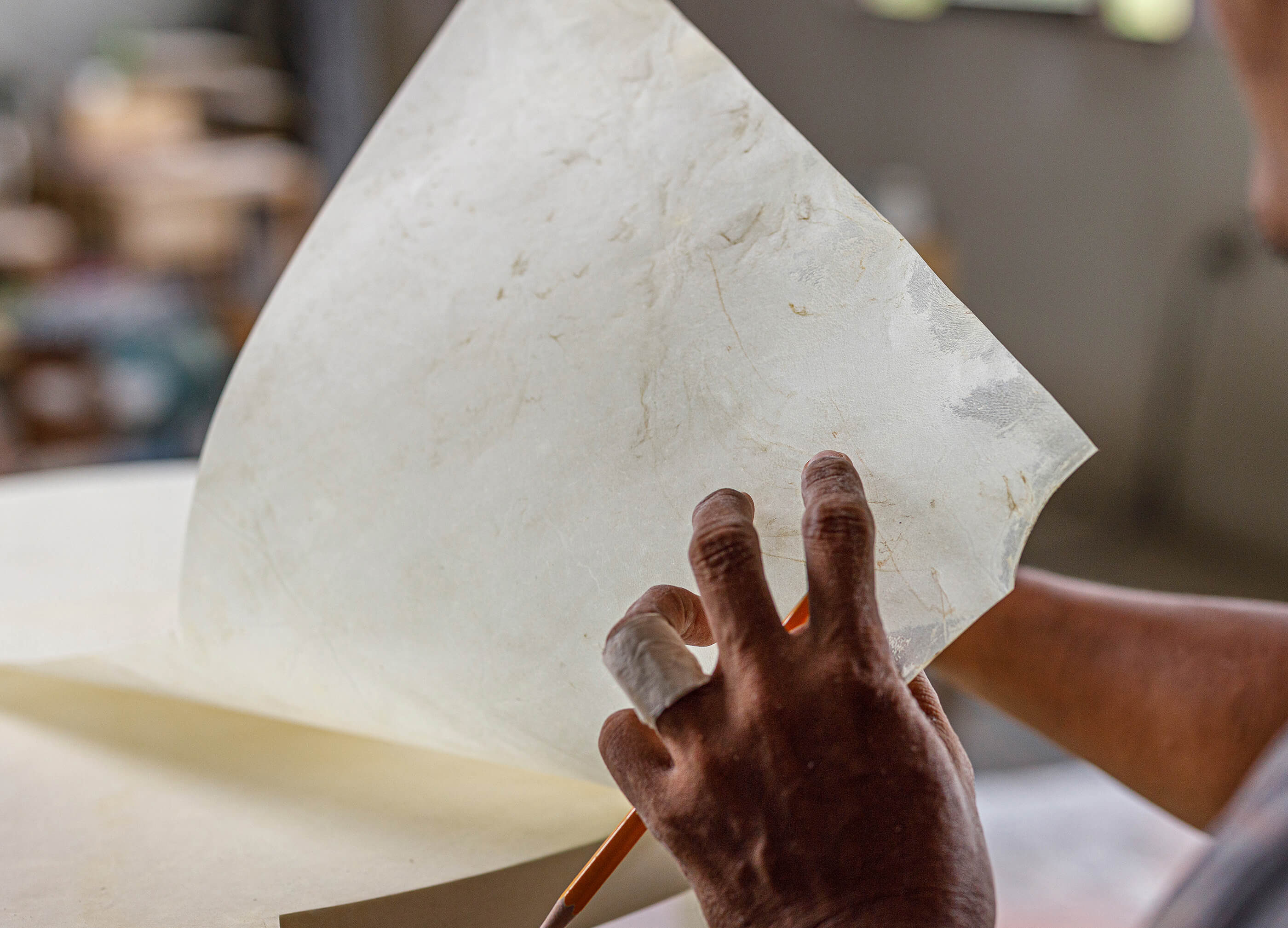
A Piece of History
La Galuche’s Dean Pasquet talks about the raw material parchment—its beauty, functionality, and storied past
by Vicky Montenegro
One cannot talk about shagreen and not mention the Cebu-based luxury home brand La Galuche. They are, after all, renowned for their beautiful shagreen pieces and intricate shell-inlay work. La Galuche’s founder, Jean Marc Pasquet, developed the craftsmanship of shagreen (or galuchat in French) in the tropical island almost 40 years ago.
But besides the leather made from stingray skin, the company also uses other finishes, among them parchment, a lesser known skin material, yet one that the company’s clientele regularly requests for. “Whenever there is an art deco project, you will always hear a bit about shagreen, about parchment,” Dean Pasquet, Jean Marc’s son and General Manager of the Cebu atelier, says.
It was, in fact, a request from one particular client that prompted the company’s use of the material. “We actually started working with parchment when my sister [Lani] and I joined in 2009,” Pasquet shares. “One of our clients requested to try to find the skin and work with it. It took about three to four years to really get the research and development going on with it.”
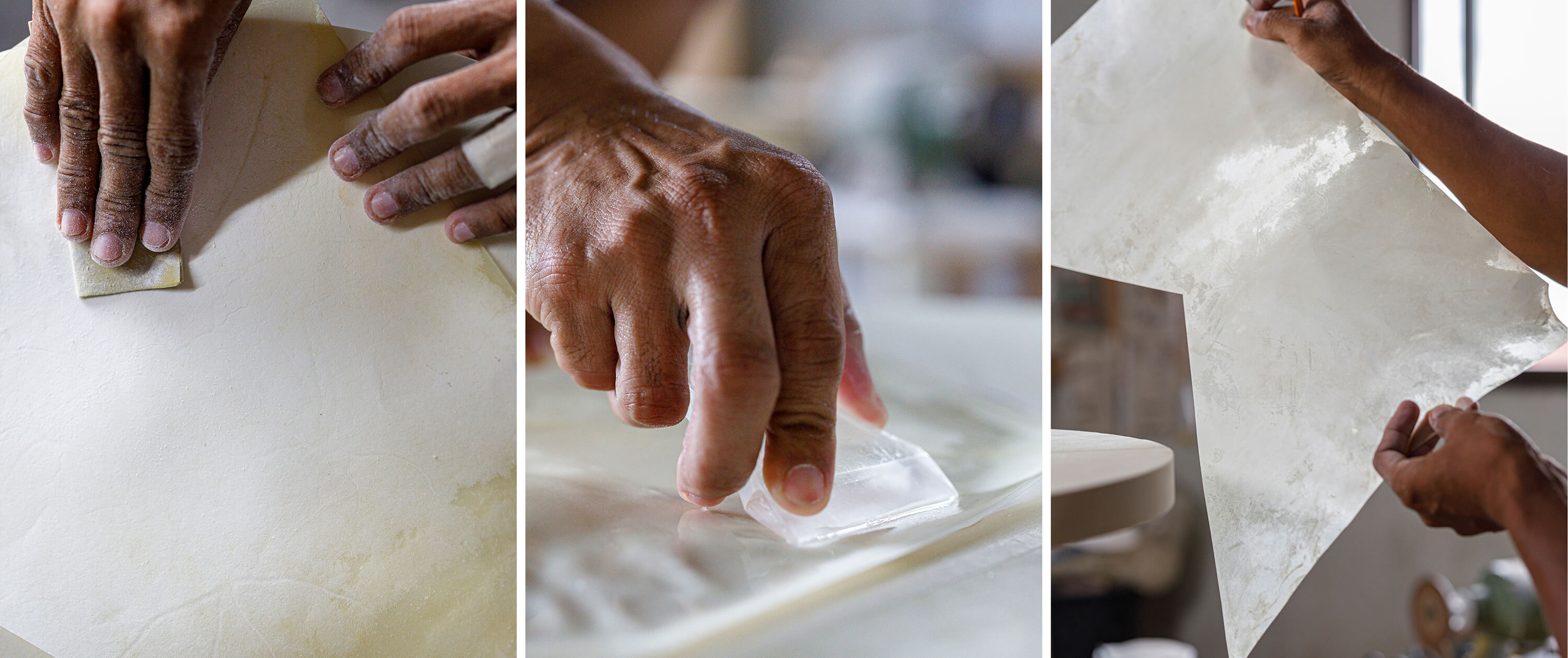
Parchment is a tricky material to work with, but La Galuche invested in the research and development to perfect the use of the material
Parchment is the transformed state of either a plant or an animal, so you can have vegetal or animal parchment. The first parchment was made from papyrus, made from the pith of the papyrus plant, “which mostly grew in Egypt and the Mesopotamian areas,” Pasquet explains. “They actually take the pith—it's not made from the leaf, but from the pith—crush it, and then they layer them onto a sheet. It's then pressed in like a very heavy press and then dried up. It's the same way you would make, for example, raffia: you'd have some fibers going in one direction, and then the next layer will be in the opposite direction. You'll do four layers, press them together, and then you're basically going to have linen—or something like an organic tissue made from plants. That's the vegetal parchment.”
“Parchment was first used as paper,” Pasquet continues, “I think, during the Egyptian time—so about 3000 B.C.—then later on as well during the Roman Empire. So if you go to the Duomo in Florence, you will see the old writings of the Bible are written on parchment paper.”
Parchment lost its popularity for a time. “The use of parchment was forgotten for a while and was only brought back in the 1920s. In France, the decorators were using the skin on walls and furniture. And in the late 19th century, early 20th century, that was also the start of leatherwork. I mean, the tanning of the leather has been done for many years but as the techniques evolved during the 19th century, people were starting to tan a lot of different skins—not only cows, they were taking goats, sheep. They were tanning crocodile skin, python skin—pretty much almost everything that moves and has a thick skin.”
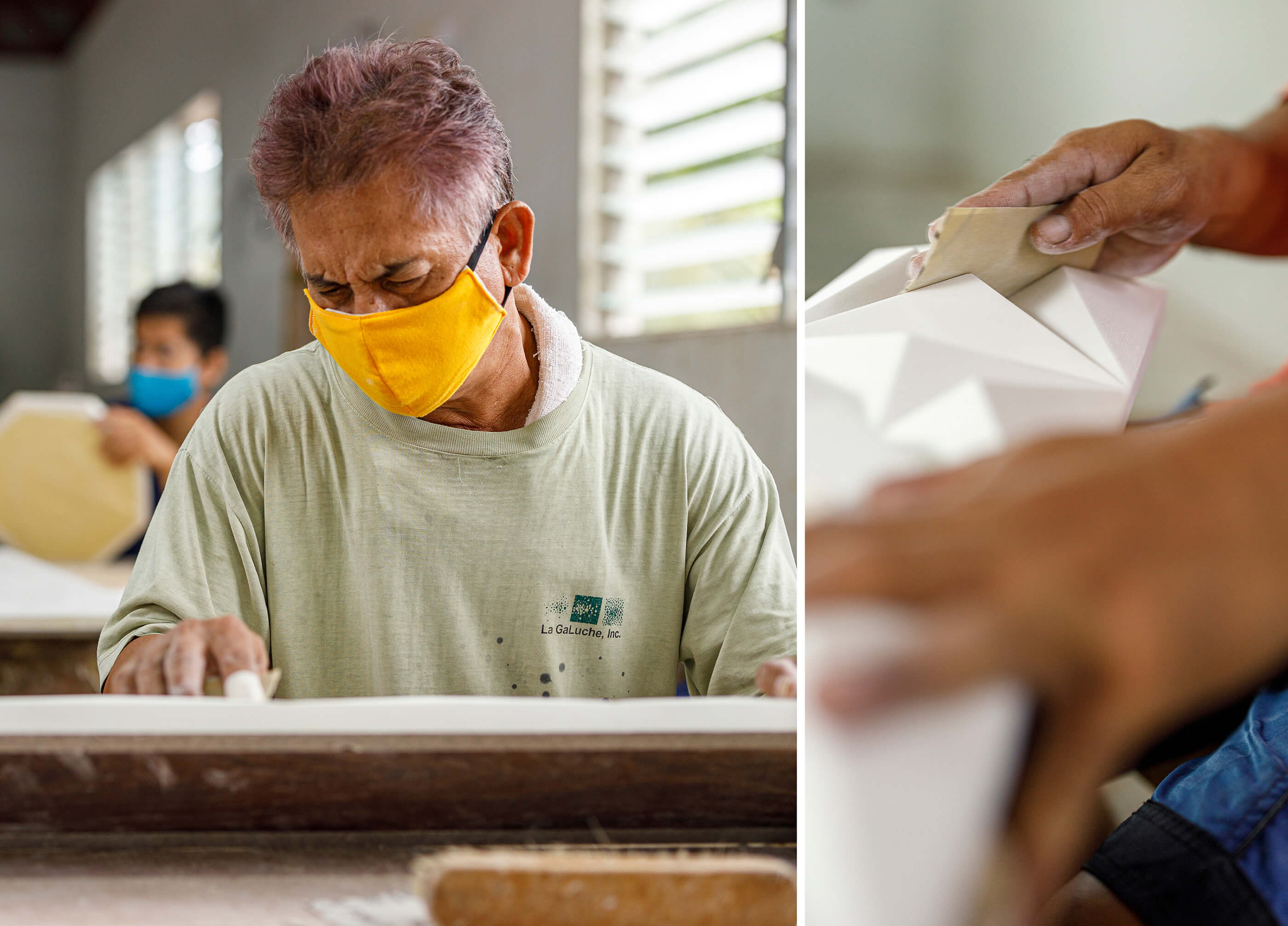
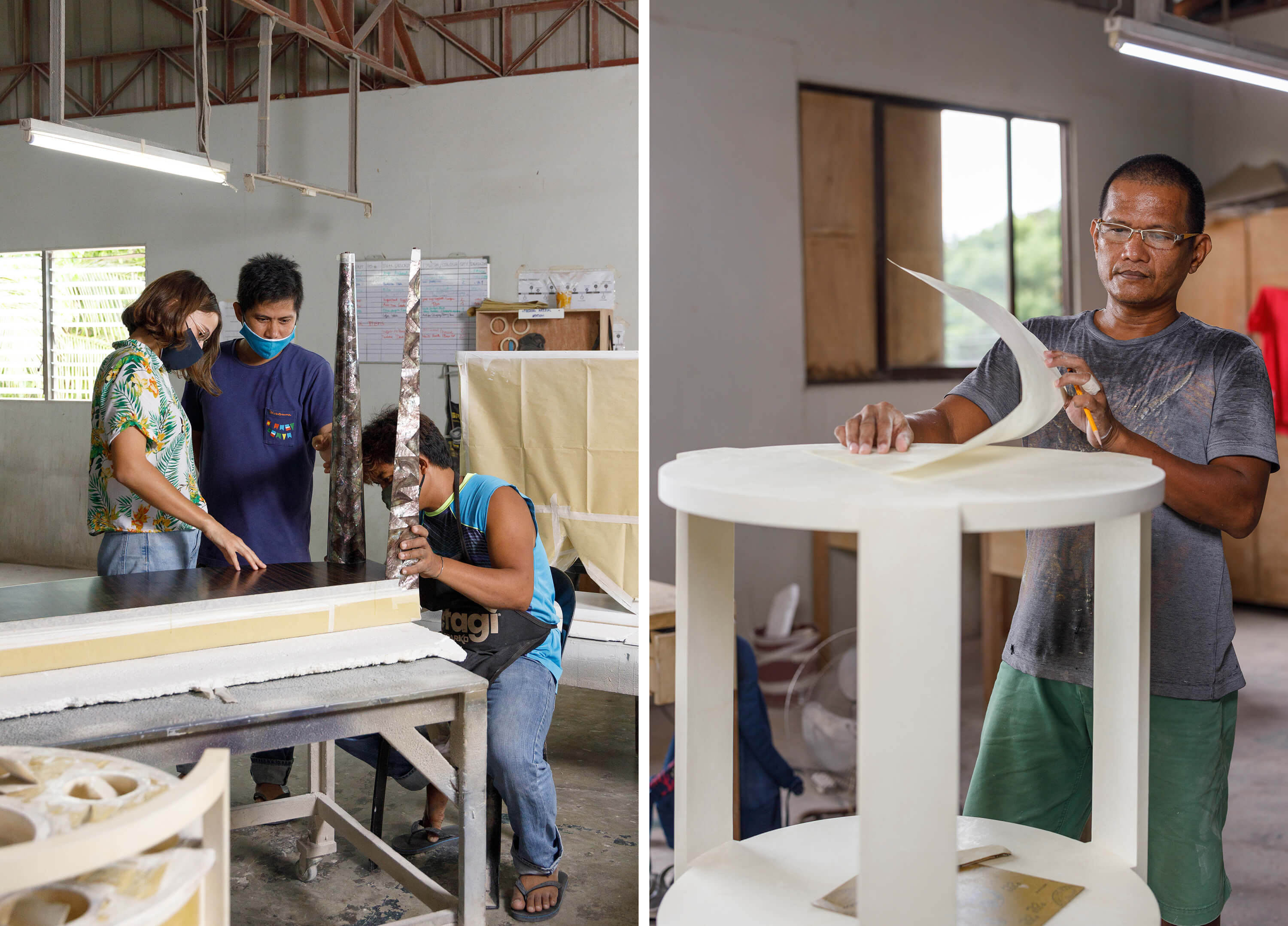
La Galuche uses air-dried parchment skins that have been meticulously selected from their suppliers in Cebu. They then process the finish in house. Production Manager Clara Brient supervises the workshop and ensures quality control
Animal parchment, Pasquet points out, “is mostly made from goats, sheep, calf—most of these animals that have hair and a very thin layer of skin.” In the US, he adds, they call it vellum. “People have always wanted to use, recycle animal skins ever since the early days. The basic process of making parchment skin is removing all the hair, removing all the meat that is attached to the skin. And then once you have that paper-thin skin of the animal, you basically hang it between two posts and you stretch it—just like how the prehistoric people were doing the first leather or the first blanket. It's the same process but with the skin only.”
La Galuche uses expertly curated air-dried parchment that they process in house. “We buy from the different farmers,” Pasquet says. “We have a workshop that takes all the skins, removes the meat, and processes them. We use this form of parchment in La Galuche. But I know of some other parchment specialists; like in the US, they also have different coloring and dyeing processes used on the skin itself. For La Galuche, we basically buy the parchment in three different colors: half-bleached, bleached, and antique.” Half-bleached (placed in a bleach bath for about two days) appears off-white or ivory; bleached (placed in a bleach bath for about five days) appears white; and antique (the most natural state—not chemically treated and just rinsed with soap), can vary from light to dark brown, depending on the animal. “Basically all the parchment skins are going to be a bit different,” Pasquet says, “and can vary from a light brown to a dark brown because the goats are different, depending on where they grow.”
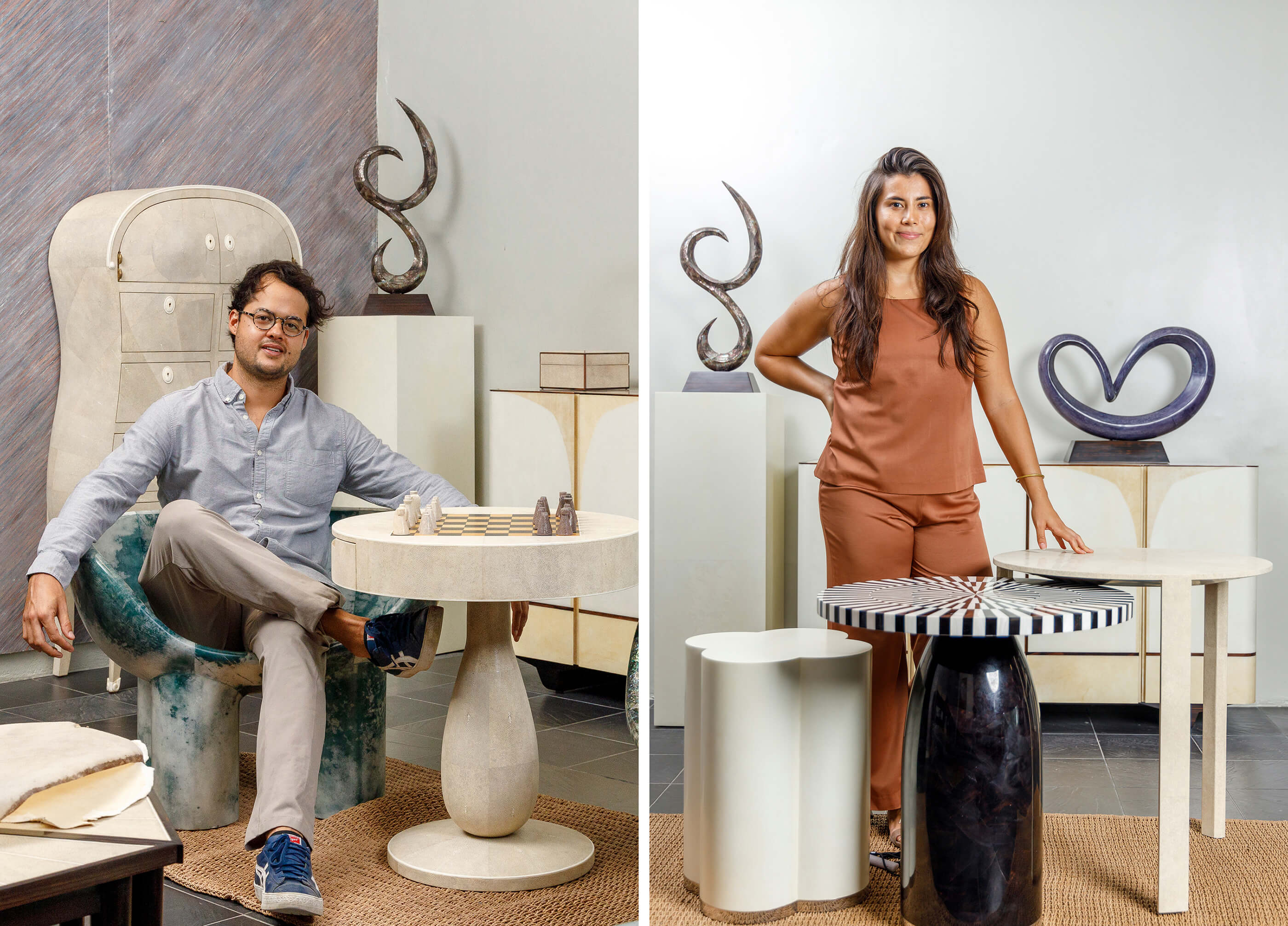
Dean Pasquet, General Manager of the Cebu Atelier, also has his own interior design consultancy and bespoke furniture studio, Dean Taylor Studio. Stephanie Sharpe has been heading all marketing efforts since joining the company in 2017
THE LA GALUCHE TOUCH
Because La Galuche is most known for their shagreen finish, comparisons between stingray skin and goat skin are often made—and asked about. “Parchment is a much bigger hide, compared to shagreen,” Pasquet explains. “Four skins is about one square meter, and with shagreen, you’ll need 16 skins to make the same surface. So, in terms of volume and covering capacity, it's better to use parchment. And it's almost a third of the price. So for some very large coverings, it's a great surface. It's also a surface that is a lot sturdier.”
Pasquet recommends parchment for furniture that will go in high-traffic and “high-risk” areas. “I always recommend parchment because shagreen, while it is my favorite material to work with and is one of the most unique materials, is also one of the most stainable. Parchment is super strong. When you touch the skin, it's very hard to tear. It's like a one-millimeter sheet of paper but impossible to tear. It's pretty much like trying to tear a piece of leather.”
Parchment can be varnished in either matte or high gloss. La Galuche uses a very high-end UV polyurethane finish for all their parchment finishes. “In all of our parchment in-lays, there is always a varnish on top. The polyurethane varnish that we use is UV-protected, so it's very strong against the rays of the sun. It will not become yellowish. It's waterproof; it's stain-proof. It’s good for coffee tables, dining tables… For hotel use, it's pretty good, or for some of the pieces I design for clients with kids, it’s also good.”
The parchment can also be dyed in any color. Pasquet points to a red chair made of parchment. “So this is a request for a fire truck red parchment,” he says. “This one was in-laid first in white and then it was hand-dyed. It's not painted—it's hand-dyed—so you can really see the intricacies on this chair.”
They also have another finish: a marbling technique that Pasquet calls a “La Galuche exclusive.” “It's been done before, but now we've really developed it,” he says. “Basically we take the parchment skin that is very bleached and that has the most transparency. Then we paint the background of the furniture in a certain color and once we put the skin on it, the lighter parts of the raw material are going to pop out. We're basically working with the transparency of the skin. That gives the skin a pattern that is unique.”
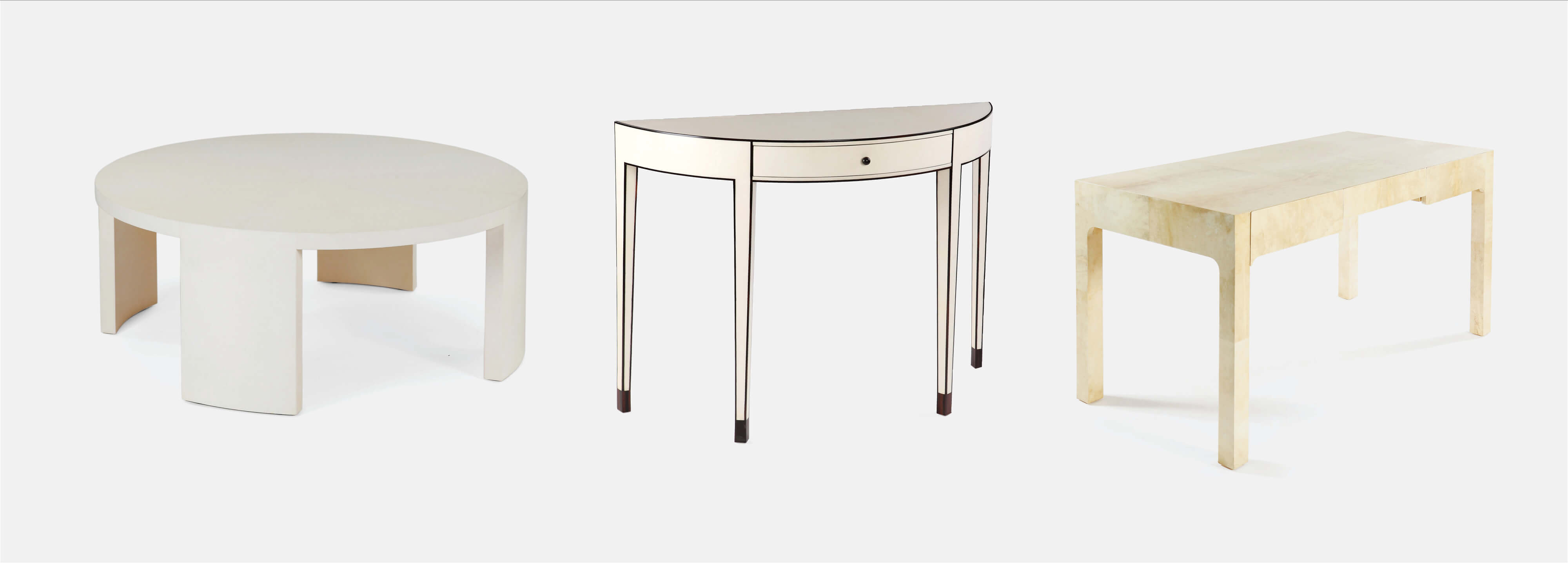
La Galuche uses parchment in three different colors: (from left) bleached, which appears white (as seen in the Round Modern Coffee Table); half-bleached, which appears off-white or ivory (as seen in the Marc Console); and antique, which is the natural color of the skin but can vary from light to dark brown, depending on the animal (as seen in the Modern Desk)
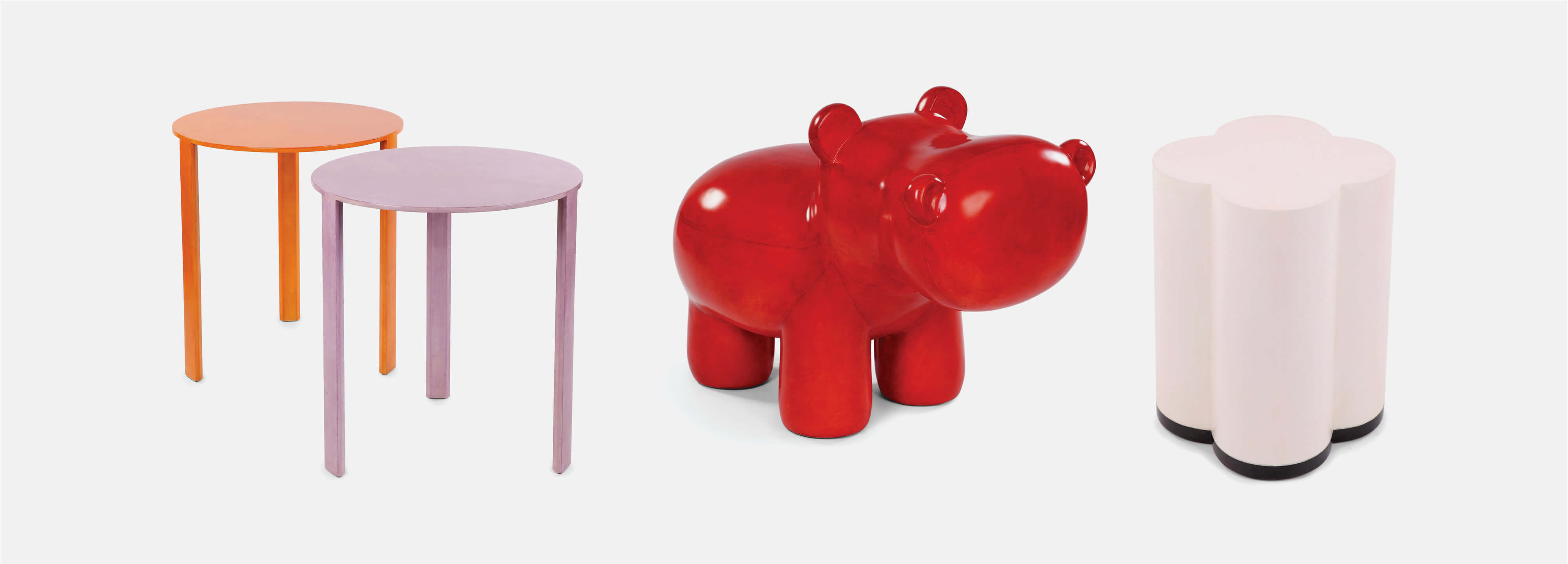
La Galuche hand-dyes the parchment to suit a client’s request, as seen in the (from left) Round Occasional Table in Orange and Lilac, Hippo Seat in Red, and Clover Parchment Drum in Pale Pink
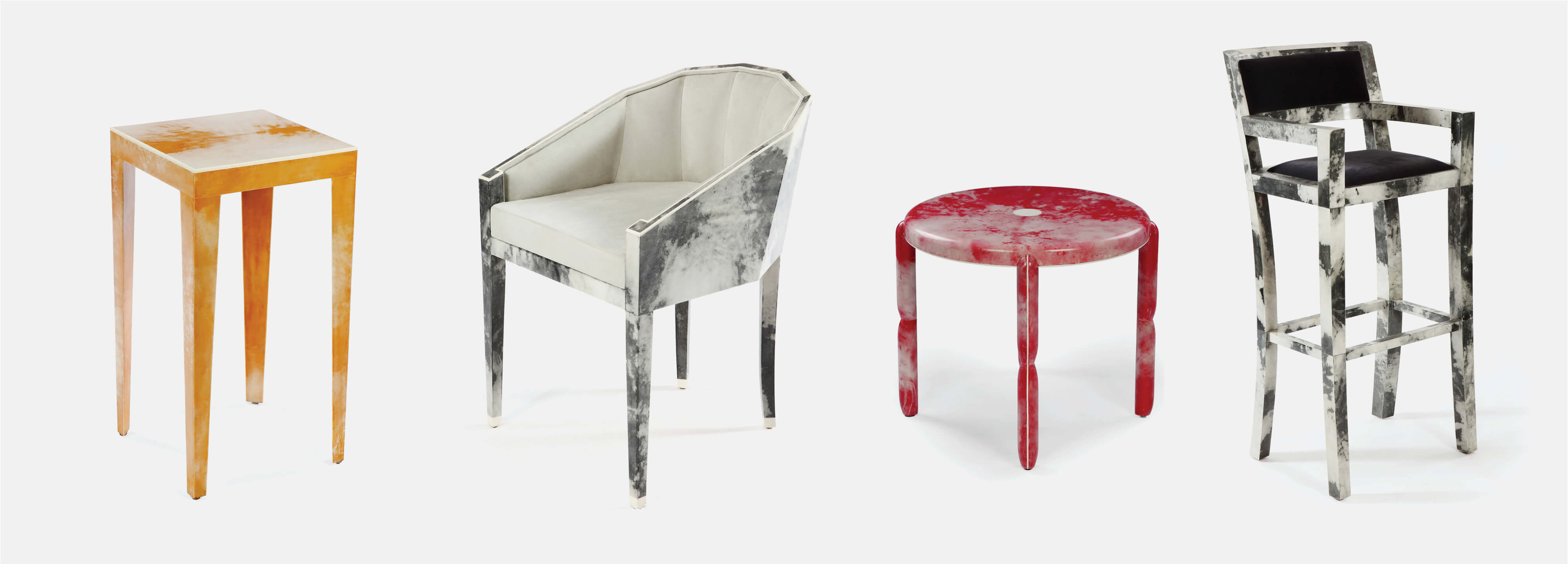
La Galuche pioneered the marbled finish, where they cover a painted piece with bleached, very transparent parchment. The parchment’s transparency against the color creates a unique marbled pattern, as seen in the (from left) Ebony Square Drink Table, Chamfer Chair, Marbled Groult ’30s Side Table, and Bar Chair
“It was actually Dean's dad that brought that technique to Cebu and taught Cebuanos how to do it,” Stephanie Sharpe, La Galuche Marketing Head, points out. “And, you know, as the years have gone, Dean is constantly trying to evolve that technique. We used to do it with just a plain black background, and now we're doing it in several different colors and we're also testing out dyeing the skin, as well as painting the base. We're always trying to see how far we can take a material, a technique, and how we can do something differently.”
Not many local companies use parchment. For one, it’s a tricky material to work with, and there’s also the market to consider. “If you really want to figure out how to work with it, you might be able to figure it out,” Pasquet says. “But I also think it's about the clientele you have. It is a connoisseur’s market, so people understand the price. So have the clientele first and then master the art.”
Those that do appreciate the beauty of parchment and understand its value also see the history, the art, and the labor of love behind each piece. “What we do is really unique,” Pasquet reasons. “It’s really one of the last few still standing art forms in France and, probably, three or four people like us around Asia. So you're buying a chunk of history, and you're buying Filipino. When my customers visit us here in the workshop, they really see the labor of love behind each piece. It’s a product that has a story.”
Photography Mark Philip Dales
Art Direction Kit Singson


